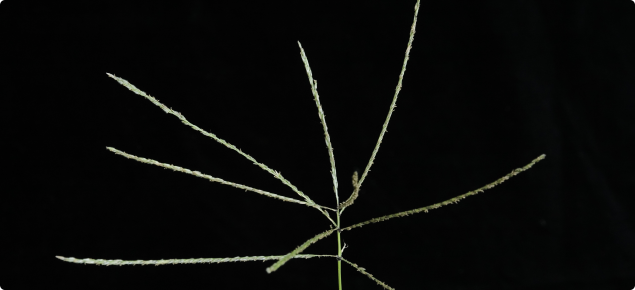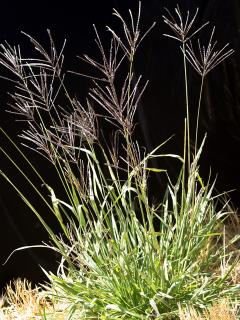Features
Digit grass has the following features:
- a persistent, drought-tolerant, tufted grass
- adapted to a wide range of soils
- good drought and cold tolerance
- tolerates heavy grazing once established
- low tolerance of waterlogging.
Digit grass (Digitaria eriantha) is an out-crossing species native to South Africa (Transvaal, Orange Free State, northern Cape) where it occurs in a range of habitats in summer-rainfall areas (400–1000mm). It is cultivated in South Africa, Argentina and Australia. This species also includes Pangola grass (Digitaria eriantha ssp. pentzii, formerly D. decumbens) which must be vegetatively planted and is widely grown in tropical regions (not discussed here).
Digit grass is a species which has not been widely sown in WA, but in field trials the persistence and production has been lower than panic grass and Rhodes grass. In NSW, digit grass has persisted and performed well on a wide range of soils and environments. It has survived severe droughts and persisted in the long-term under commercial grazing.
Description
The morphology of digit grass can be described as:
- a medium to tall (60–130cm), tufted grass
- the lowest leaf sheaths are densely hairy, but the leaves have few or no hairs
- stems are usually unbranched and up to 130cm high
- finger-like seed head with one to three whorls arranged on a central axis.



